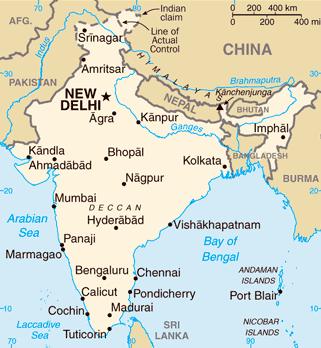On the Uttar Pradesh-Bihar frontier, the chungi system is alive and well. One of the most unnecessary legacies of British colonialism, no less than five kilometers of trucks -- those colorfully decorated and melodically horned belching beasts, overloaded with everything from steel beams to sacks of flour -- sit idle, waiting to show their permits, sales tax chits, and other sheaves of documents to corrupt officers. My mother and I are on a nostalgic road trip from Delhi to Calcutta, driving on both emperor Akbar's famed Grand Trunk road and its newest incarnation, the much touted "Quadrangle" project of major highways linking India's largest cities: Delhi, Calcutta, Mumbai, and Chennai. We're visiting the cities of our birth -- me in Kanpur, and my mother in Banares (Varanasi) -- and taking an honest stock of India's superlatives: economic growth, social freedom and religious diversity, yes, but also over-population, corruption, and pollution. India's northern belt is ground zero for all of these. That India arrived late in initiating economic reforms is an old story. Now we are told that India is unstoppably on the move. Tell that to the truckers now 40 km behind us. In certain stretches, the Quadrangle's two lanes are smooth. But even a clear highway is precarious here. Rather than bypass villages, the road sometimes goes straight through them, picking up cattle, pedestrians, cyclists, and beggars along the way. We swerve constantly to avoid these and other impediments. There is so much uncoordinated construction that we drive on detours of detours. On the best stretch, 75 kph would be cruising Nevada-style. But on our left the cab of a tractor-trailer is face down in a ditch. A crowd has gathered and barefoot, dust-covered women are weeping.
On the Road to Disaster in India

